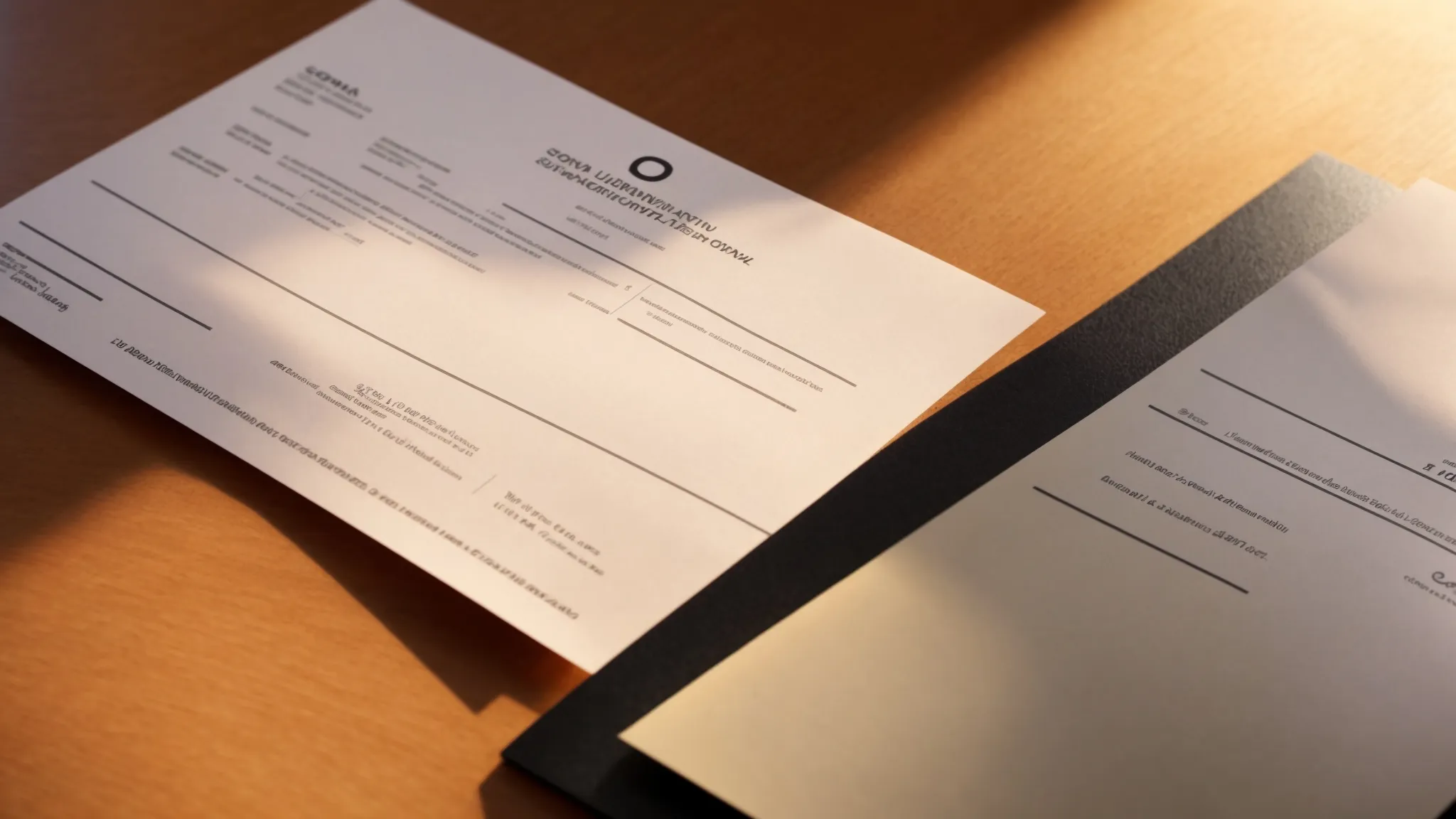Many small business owners face uncertainty when sending cheques through the mail. How can one ensure that those envelopes reach the intended recipients without delay? This article will cover effective strategies for monitoring mailed cheques, including setting up a reliable tracking system and leveraging postal services with tracking features. By reading this content, you will gain practical tips to enhance your payment system, reduce the risk of lost cheques, and streamline your banking process. If you’ve ever worried about your bank account not reflecting a payment, this guide will provide solutions to ease those concerns.
Understand the Importance of Monitoring Mailed Cheques

Recognizing potential risks associated with mailed payments is crucial for any business relying on cash flow. Tracking mailed cheques offers numerous benefits, such as ensuring timely invoice payments and providing peace of mind. Employing methods like certified mail and automation can enhance the process when sending checks, ultimately safeguarding financial transactions.
Recognize Potential Risks Associated With Mailed Payments
Maîtred cheque payments present several risks that can significantly impact a business’s cash flow. Delays due to postal issues or lost cheques can lead to late payments, which disrupts financial planning. This can be particularly concerning when cash flow is crucial for day-to-day operations, making timely payments essential for maintaining healthy business relationships.
Moreover, businesses that rely heavily on mailed cheques may find themselves vulnerable to fraud, as lost or stolen cheques can be altered and cashed without authorization. In contrast, methods like wire transfer or direct deposit provide more secure alternatives, offering quicker and verifiable transactions. Understanding these risks emphasizes the importance of effectively monitoring mailed cheques to enhance the security of financial operations.
Identify Benefits of Tracking Your Cheques
Tracking mailed cheques presents significant advantages for businesses concerned about cash flow management. By using methods such as registered mail, companies can obtain proof of delivery, ensuring that payments reach their intended recipients without delays. This process allows businesses to mitigate the risk of late payments, which can incur fees and disrupt operational budgets, thus supporting healthier financial planning.
In addition to ensuring timely delivery, monitoring mailed cheques helps to protect against fraud. By keeping accurate records and tracking when a cheque is sent, businesses can quickly identify any irregularities, such as if a cheque has been altered or cashed without authorization. This proactive approach not only safeguards a company’s finances but also fosters trust between businesses and their clients, enhancing overall financial security.
You know where your cheques go, but can you see their journey? Setting up a tracking system will bring peace of mind and keep your business running smoothly.
Set Up a Reliable Tracking System

Businesses can choose between digital and manual tracking options for mailed cheques to enhance their monitoring processes. Utilizing cheque tracking software effectively can streamline the process by providing real-time updates on the status of payments. Implementing a checklist for mailed cheques ensures that all necessary steps are followed, helping to minimize errors and maintain efficiency throughout the transaction process.
Choose Between Digital and Manual Tracking Options
When deciding between digital and manual tracking options for mailed cheques, businesses should consider the specific needs of their operations. Digital tracking systems can offer real-time updates on cheque statuses, allowing for quick identification of any issues such as delivery delays or misplaced payments. For instance, cheque tracking software can send notifications when a cheque is mailed, received, or cashed, providing peace of mind and enhancing cash flow management.
On the other hand, manual tracking methods can still be effective for businesses that prefer a more hands-on approach. Maintaining a physical log or checklist allows employees to confirm cheque dispatch and delivery while adding a personal touch to the process. Combining both digital and manual methods can create a robust tracking system that caters to various business preferences, ensuring that all mailed cheques are monitored diligently for better financial oversight.
Utilize Cheque Tracking Software Effectively
Cheque tracking software offers a streamlined way for businesses to monitor their mailed cheques effectively. By providing real-time updates on cheque statuses, this software helps identify potential issues such as delivery delays or lost payments. Businesses can enhance their cash flow management by receiving automatic notifications whenever a cheque is mailed, received, or cashed, enabling timely follow-ups on outstanding payments.
Implementing cheque tracking software not only saves time but also reduces errors that can occur with manual processes. For example, businesses can integrate the software with their accounting systems to maintain accurate financial records effortlessly. This integration ensures that all transactions are updated automatically, allowing for better financial oversight and fostering trust with clients through transparent communication regarding payment statuses.
Implement a Checklist for Mailed Cheques
Implementing a checklist for mailed cheques is an essential practice that can significantly streamline the cheque tracking process. This checklist should include key steps such as verifying recipient addresses, confirming the amounts, and documenting the dispatch date. By following these steps, businesses can minimize the likelihood of errors, ensuring that all necessary information is accounted for before a cheque is mailed.
A well-structured checklist also serves as a proactive measure against potential issues. For instance, businesses can include a section for tracking delivery confirmation, which helps in identifying when a cheque has reached its destination. This approach not only enhances accountability but also fosters communication with clients, ensuring that timely follow-ups on payments are managed effectively.
With a good tracking system in place, each shipment becomes more than just a parcel; it transforms into a promise of reliability. Next, harness the power of postal services with tracking features to ensure nothing slips through the cracks.
Use Postal Services With Tracking Features

Utilizing postal services with tracking features is vital for maintaining oversight of mailed cheques. Businesses can explore options like Registered Mail and Certified Delivery to ensure secure transmission. Understanding how to use tracking numbers enhances the capability to monitor deliveries effectively, enabling timely follow-ups and safeguarding financial transactions throughout the process.
Explore Registered Mail and Certified Delivery Options
Registered Mail and Certified Delivery options provide businesses with enhanced security when mailing cheques. By utilizing these postal services, companies can receive proof of delivery, ensuring that payments reach the designated recipients without any delays. This tracking capability not only offers peace of mind but also helps in maintaining an organized cash flow, as businesses can confirm that funds have been dispatched and are on their way to the intended destination.
Moreover, these services allow businesses to monitor the status of cheques throughout the mailing process. For example, with Registered Mail, senders can track their packages online, receiving updates that indicate when the cheque has been mailed, and when it is delivered. This proactive approach ensures that any potential issues can be quickly addressed, reducing the risk of lost or misplaced payments, ultimately reinforcing trust in financial transactions.
Understand How to Use Tracking Numbers
Understanding how to use tracking numbers is essential for businesses looking to monitor their mailed cheques effectively. Tracking numbers provide a unique identifier for each package, allowing businesses to follow the journey of their cheques in real time. This feature not only confirms when a cheque has been mailed but also indicates when it has been delivered, helping to manage expectations and ensure timely payments.
To utilize tracking numbers properly, businesses should ensure they record these numbers immediately upon mailing their cheques. By entering the tracking number into the postal service’s website or app, they can gain immediate access to delivery updates. This valuable information enables businesses to proactively address any delays or issues, ensuring that financial transactions remain secure and that cash flow is maintained smoothly.
Tracking your cheques offers peace of mind, yet it is only half the battle. Establishing a follow-up process ensures nothing slips through the cracks after the cheque has been sent.
Create a Follow-Up Process for Mailed Cheques

Establishing a follow-up process for mailed cheques is vital for effective monitoring. Developing a timeline for cheque monitoring enables timely identification of delayed or missing payments. Communication protocols for non-received cheques ensure swift action can be taken, allowing businesses to address issues promptly and maintain healthy cash flow. These strategies contribute significantly to secure financial operations.
Develop a Timeline for Cheque Monitoring
Creating a timeline for cheque monitoring is integral for businesses to manage their mailed payments effectively. By establishing specific timeframes for follow-ups after cheques are dispatched, companies can swiftly identify any transactions that have been delayed or misplaced. For example, a business might set a protocol to check the status of a cheque a week after it has been sent, allowing for proactive communication with clients if the payment has not cleared within the expected timeframe.
A well-defined timeline also enhances financial accountability and supports smoother cash flow management. By marking reminders on calendars or utilizing digital tools to track when cheques were mailed, businesses can ensure follow-ups are timely and persistent. This approach not only minimizes the risk of late payments but also reinforces reliability in business relationships, as clients appreciate the attention to detail surrounding payment processes.
Establish Communication Protocols for Non-Received Cheques
Establishing communication protocols for non-received cheques is essential for businesses aiming to maintain a reliable cash flow. When a cheque is not received, it is crucial to have a structured approach that outlines who will be responsible for following up and the methods to be used. This ensures that any issues can be addressed swiftly, minimizing disruption to operations and relationships with clients.
Regular communication can help identify problems early on. For example, setting up automatic reminders to reach out to clients a week after sending a cheque can provide valuable insights into whether payments have been received. By maintaining an open line with clients, businesses can discuss any potential delivery issues and reinforce trust within the working relationship, thereby enhancing overall financial confidence.
Mailed cheques require attention to ensure they reach their destination, but there is another way. Online banking and payment platforms offer speed and convenience that can change how transactions are managed.
Leverage Online Banking and Payment Platforms

Utilizing e-checks and online payment platforms provides businesses with significant advantages when monitoring mailed cheques. These options facilitate quicker transactions while minimizing the risk of lost payments. Additionally, account notifications related to cheque activities keep companies informed about the status of their payments, enhancing financial oversight and fostering trust in their cash flow management.
Share Benefits of Using E-Checks and Online Payments
Utilizing e-checks and online payment platforms streamlines the payment process significantly for businesses. These digital alternatives reduce the likelihood of lost cheques and associated delays, leading to more predictable cash flow. As a practical example, businesses employing e-checks can enjoy near-instantaneous processing, enabling clients to complete payments with minimal effort and ensuring that transactions are recorded promptly in the financial system.
Incorporating online payments into daily operations also enhances accountability and transparency. With real-time notifications regarding cheque activities, businesses gain immediate insights into their financial status. This capability simplifies tracking and monitoring of payments, allowing companies to address any discrepancies quickly, thereby reinforcing trust in their financial operations and relationships with clients.
Investigate Account Notifications for Cheque Activities
Monitoring account notifications related to cheque activities is vital for businesses utilizing online banking and payment platforms. These notifications provide real-time updates on cheque status, ensuring that companies are promptly informed about deposits, withdrawals, and any transactional issues. By staying updated, businesses can quickly address discrepancies, minimizing any potential impact on cash flow management.
For instance, setting up alerts for cheque deposits allows accountants to verify which payments have cleared and to follow up on outstanding cheques effectively. This proactive approach not only enhances financial oversight but also reinforces trust with clients, as timely communication about payment statuses can strengthen business relationships. Utilizing account notifications equips businesses with the tools they need for effective cash flow monitoring and helps in preventing delays or lost payments.
Online banking has its perks, but not all transactions go as planned. Many still rely on mailed cheques, which can bring their own set of challenges that demand careful monitoring.
Address Common Challenges in Monitoring Mailed Cheques

Addressing common challenges in monitoring mailed cheques is essential for maintaining a steady cash flow. Troubleshooting lost or delayed cheque issues can help businesses quickly identify and rectify problems. Additionally, understanding how to deal with cheque fraud effectively equips businesses with strategies to safeguard their finances. These insights are vital for ensuring secure and efficient cheque management.
Troubleshoot Lost or Delayed Cheque Issues
Troubleshooting lost or delayed cheque issues requires a systematic approach to quickly identify the root cause. First, businesses should immediately verify the cheque’s dispatch date and tracking status through the postal service’s website. If the tracking information shows that the cheque has been marked as delivered but has not been received, reaching out to the recipient is advisable to confirm receipt and address any possible postal errors.
If a cheque is confirmed as lost, businesses should take swift action by placing a stop payment order with their bank. This step not only prevents unauthorized cashing but also protects against potential fraud. Following this, companies can issue a replacement cheque while implementing measures to track future mailed cheques more effectively, such as utilizing registered mail or employing cheque tracking software for better oversight.
Discuss How to Deal With Cheque Fraud Effectively
To effectively deal with cheque fraud, businesses should implement strict protocols when issuing and processing cheques. This includes using high-security cheque stock that features advanced security elements, making alterations or reproductions extremely difficult. By maintaining detailed records of all cheque transactions, businesses can quickly spot any discrepancies and take necessary actions to protect their finances.
Additionally, establishing clear communication with clients regarding cheque handling can mitigate risks associated with fraud. Businesses should advise clients to report any suspicious activity immediately and consider investing in fraud detection tools that monitor cheque usage patterns. Utilizing these strategies ensures that companies can respond swiftly to potential fraud, ultimately safeguarding their cash flow and enhancing financial security.

